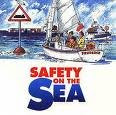
Keep in mind that no matter how much experience and expertise you have on boating, the safety rules should always be reviewed prior to each departure. The captain of the vessel is the one who is responsible for the security and safety of everybody on board. It is also extremely necessary that every person in the boat knows where to find the safety equipments. Orient everybody about how important it is that they know where these tools are located so that everyone can contribute to the safety of each person on board in the event of an emergency.
More than the pleasure and adventure of boating, responsibility also goes hand in hand with these. Therefore, above anything else, knowledge of safety rules and equipments is a must. Here are some boating tips:
More than the pleasure and adventure of boating, responsibility also goes hand in hand with these. Therefore, above anything else, knowledge of safety rules and equipments is a must. Here are some boating tips:
1.Check the weather condition prior to going on board.
Television and radio forecasts are good sources of information. If you are noticing dark clouds coming, rough wind changes and a sudden drop in temperature, these are signs that you have to play it safe with the waters.
2.Always have a pre-departure checklist on handy.
This also means being prepared for different possibilities while on board including safety regulations and compliance on when to refuel. Having a checklist on hand ensures you that there are no boating safety rules and precautions had been forgotten. Here are what should be included in the checklist:
a)Weather check
b)Boat is currently registered
c)Boat licensed)Familiarity with where you are goinge)
Check tide and ensure that the ramp is suitable for launchingf)Check for any boat defects and areas that need repairg)Enough fuel for the trip plus reserveh)Food and water for the trip and back plus reservesi)Safety equipments and boat accessories that are all in good working conditionj)Show passengers where safety equipments and boat accessories can be foundk)Include reliable person in boat plan, number of passengers, what emergency beacon you have
3.Prepare safety equipments especially the ones strictly required by the law.
Be sure the check the laws in your local authorities.
Here are some the boating safety equipments that you should keep in your boat:
a)Oars, rope and knife
b)Radio, Mirror, Torch, Flares
c)Boat Hook
d)First Aid Kit
e)Fire Extinguisher
f)Drinking Water, Buoyancy aids and life jackets
g)Bucker or Bailer
h)Chart and compass
i)Anchors chain and rope
j)Emergency Position Indicating Radio Beacon (EPIRB)
4.Operate at a safe speed and observe this at all times.
Be aware of the busy areas and steer clear of huge vessels. Respect navigational aids and buoys which had been placed to ensure boating safety.
5.Designate one person on board who is familiar with all aspects of the boat including handling and operation.
This is just in case the primary navigator gets sick or incapacitated. It is important that somebody has the ability to bring everybody back on shore.
6.Develop and implement a float plan.
Make sure that somebody knows where you are going and how long you will be gone. Inform a family member or a local marina staff. Include the name, phone number and address of the trip leader, type of boat and registration details, number of passengers, what communication tools you have on board and trip details.
By: torcidatg




Comments :
0 komentar to “Boating and Basic Safety Tips”
Posting Komentar